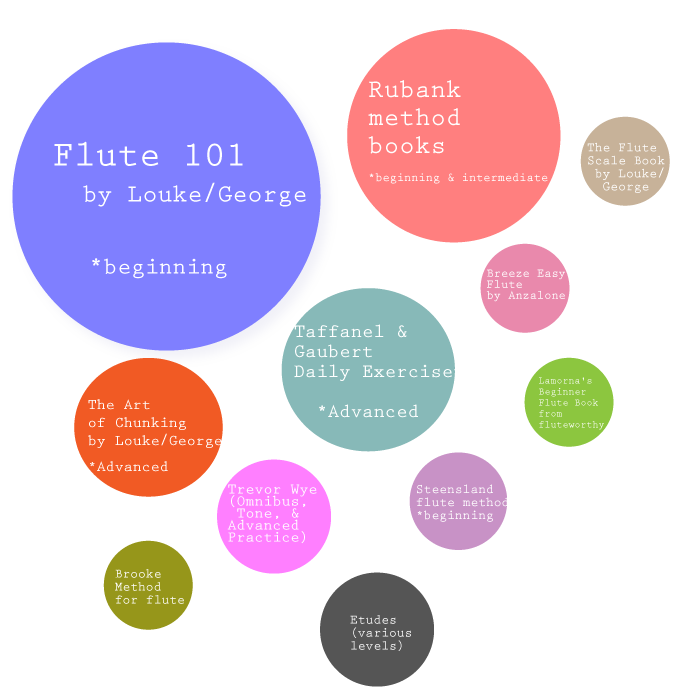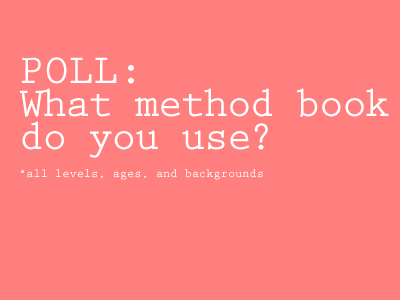Earlier this month I took a Facebook poll to see what methods were being used today. The question was open ended: It encompassed all levels, ages, and teaching styles.
I received great feedback, which led me to interview Phyllis Avidan Louke–co-author of the Flute 101, 102, 103, and many other popular method books.
I’ve made a small graphic that represents the feedback I gathered. The larger “bubbles” were more popular method books. When the survey participant indicated method book level, I made a note to include that. You’ll also find quotes from some participants below. Thanks to everyone who contributed!

Participant Responses
Flute 101, Flute 102, Flute 103, The Flute Scale Book and The Art of Chunking by Patricia George and Phyllis Avidan Louke, published by Presser. These books are based on my experiences from over 50 to 60 years of teaching using the ideas of my teachers: Mariano, Kincaid, Baker and Blaisdell.
I use Patricia George’s Flute 101 if I feel they can handle a fast-paced book or have had musical training before. I really like the hints and tips they give and LOVE the fact that they have two pages of headjoint exercises in the beginning. She also has books 102 and 103 to continue with studies. I haven’t dabbled too much in using those yet because I just started with this series, but I’m loving it so far! Trevor Wye has been an old standby for me for YEARS. I love the fact that he focuses on really getting out a nice, good sound. I use his method for beginners who have never had musical training before because it’s not as scary or overwhelming (It has pictures and fun stuff and the print isn’t as small). If I were to have more intermediate players, I would use Flute 102 and 103 with them. I’ve looked over them. I love them. I would want to use them. I have ALL beginners pretty much now. Advanced: T+G 17 Exercices Journaliers; Trevor Wye Tone; Andersen/Kohler/Berbiguer, etc Etudes – not really a method per se – more of a sequence of things I go through.
Rubank method for flute. I like it because it moves quickly, is challenging in the intermediate/advanced methods and tricks the students into playing their scales (in a fun way!). Plus I can play along with them with all the fun duets! I also enjoy Brooke Method for flute for advanced students and the obvious Taffanel and Gaubert.
Lamorna’s Beginner Flute Book from fluteworthy.com.au It teaches sound making in a fun way and combines songs they know with other less familiar songs to provide a rich repertoire for the beginner. It also sets students up to be able to play in a concert band after only a few months.
Missed the poll? Comment below!



Fluting Stars 1 and Fluting Stars 2 by Ana and Blaz Pucihar are exciting colourful method books for young flute beginners. Kids love the layout, accompanying tracks and the step by step progress. There is lots of music theory, fine motor skills activities, chamber music and excitement. Check them at http://www.puciharmusic.net. Fluting Stars are available at Flute World.
Hi Ana,
Thank you for your input and we will add that to our future flute resources. This issue was focused specifically on resources and methods for piccolo. As you know, in the past, many resources were labeled for Flute (or/and piccolo). We now have methods that are written by piccolo players specifically for piccolo players and those were the methods that we chose to focus on in this issue. In an upcoming issue we will include beginning, intermediate, and advanced methods for flute and we will be sure to include your suggestion. Thank you so much for your suggestion!!